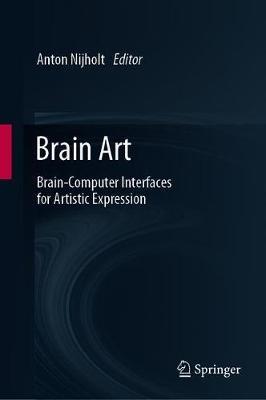Artist Joseph Nechvatal has a longstanding interest in viruses, i.e., computer viruses and that work seems strangely apt as we cope with the COVID-19 pandemic. He very kindly sent me some à propos information (received via an April 5, 2020 email),
I wanted to let you know that _viral symphOny_ (2006-2008), my 1 hour 40 minute collaborative electronic noise music symphony, created using custom artificial life C++ software based on the viral phenomenon model, is available to the world for free here:
Before you click the link and dive in you might find these bits of information interesting. BTW, I do provide the link again at the end of this post.
Origin of and concept behind the term ‘computer virus’
As I’ve learned to expect, there are two and possibly more origin stories for the term ‘computer virus’. Refreshingly, there is near universal agreement in the material I’ve consulted about John von Neuman’s role as the originator of the concept. After that, it gets more complicated; Wikipedia credits a writer for christening the term (Note: Links have been removed),
…
The first academic work on the theory of self-replicating computer programs[17] was done in 1949 by John von Neumann who gave lectures at the University of Illinois about the “Theory and Organization of Complicated Automata”. The work of von Neumann was later published as the “Theory of self-reproducing automata”. In his essay von Neumann described how a computer program could be designed to reproduce itself.[18] Von Neumann’s design for a self-reproducing computer program is considered the world’s first computer virus, and he is considered to be the theoretical “father” of computer virology.[19] In 1972, Veith Risak directly building on von Neumann’s work on self-replication, published his article “Selbstreproduzierende Automaten mit minimaler Informationsübertragung” (Self-reproducing automata with minimal information exchange).[20] The article describes a fully functional virus written in assembler programming language for a SIEMENS 4004/35 computer system. In 1980 Jürgen Kraus wrote his diplom thesis “Selbstreproduktion bei Programmen” (Self-reproduction of programs) at the University of Dortmund.[21] In his work Kraus postulated that computer programs can behave in a way similar to biological viruses.
Science fiction
The first known description of a self-reproducing program in a short story occurs in 1970 in The Scarred Man by Gregory Benford [emphasis mine] which describes a computer program called VIRUS which, when installed on a computer with telephone modem dialing capability, randomly dials phone numbers until it hit a modem that is answered by another computer. It then attempts to program the answering computer with its own program, so that the second computer will also begin dialing random numbers, in search of yet another computer to program. The program rapidly spreads exponentially through susceptible computers and can only be countered by a second program called VACCINE.[22]
The idea was explored further in two 1972 novels, When HARLIE Was One by David Gerrold and The Terminal Man by Michael Crichton, and became a major theme of the 1975 novel The Shockwave Rider by John Brunner.[23]
The 1973 Michael Crichton sci-fi movie Westworld made an early mention of the concept of a computer virus, being a central plot theme that causes androids to run amok.[24] Alan Oppenheimer’s character summarizes the problem by stating that “…there’s a clear pattern here which suggests an analogy to an infectious disease process, spreading from one…area to the next.” To which the replies are stated: “Perhaps there are superficial similarities to disease” and, “I must confess I find it difficult to believe in a disease of machinery.”[25]
Scientific American has an October 19, 2001 article citing four different experts’ answer to the question “When did the term ‘computer virus’ arise?” Three of the experts cite academics as the source for the term (usually Fred Cohen). One of the experts does mention writers (for the most part, not the same writers cited in the Wikipedia entry quotation in the above).
One expert discusses the concept behind the term and confirms what most people will suspect. Interestingly, this expert’s origin story varies somewhat from the other three.
Computer virus concept
From “When did the term ‘computer virus’ arise?” (Joseph Motola response),
The concept behind the first malicious computer programs was described years ago in the Computer Recreations column of Scientific American. The metaphor of the “computer virus” was adopted because of the similarity in form, function and consequence with biological viruses that attack the human system. Computer viruses can insert themselves in another program, taking over control or adversely affecting the function of the program.
Like their biological counterparts, computer viruses can spread rapidly and self-replicate systematically. They also mimic living viruses in the way they must adapt through mutation [emphases mine] to the development of resistance within a system: the author of a computer virus must upgrade his creation in order to overcome the resistance (antiviral programs) or to take advantage of new weakness or loophole within the system.
Computer viruses also act like biologics [emphasis mine] in the way they can be set off: they can be virulent from the outset of the infection, or they can be activated by a specific event (logic bomb). But computer viruses can also be triggered at a specific time (time bomb). Most viruses act innocuous towards a system until their specific condition is met.
The computer industry has expanded the metaphor to now include terms like inoculation, disinfection, quarantine and sanitation [emphases mine]. Now if your system gets infected by a computer virus you can quarantine it until you can call the “virus doctor” who can direct you to the appropriate “virus clinic” where your system can be inoculated and disinfected and an anti-virus program can be prescribed.
…
More about Joseph Nechvatal and his work on viruses
The similarities between computer and biological viruses are striking and with that in mind, here’s a clip featuring part of viral symphOny,
Before giving you a second link to Nechvatal’s entire viral symphOny, here’s some context about him and his work, from the Joseph Nechvatal Wikipedia entry, (Note: Links have been removed),
He began using computers to make “paintings” in 1986 [11] and later, in his signature work, began to employ computer viruses. These “collaborations” with viral systems positioned his work as an early contribution to what is increasingly referred to as a post-human aesthetic.[12][13]
From 1991–1993 he was artist-in-residence at the Louis Pasteur Atelier in Arbois, France and at the Saline Royale/Ledoux Foundation’s computer lab. There he worked on The Computer Virus Project, which was an artistic experiment with computer viruses and computer animation.[14] He exhibited at Documenta 8 in 1987.[15][16]
In 1999 Nechvatal obtained his Ph.D. in the philosophy of art and new technology concerning immersive virtual reality at Roy Ascott’s Centre for Advanced Inquiry in the Interactive Arts (CAiiA), University of Wales College, Newport, UK (now the Planetary Collegium at the University of Plymouth). There he developed his concept of viractualism, a conceptual art idea that strives “to create an interface between the biological and the technological.”[17] According to Nechvatal, this is a new topological space.[18]
In 2002 he extended his experimentation into viral artificial life through a collaboration with the programmer Stephane Sikora of music2eye in a work called the Computer Virus Project II,[19] inspired by the a-life work of John Horton Conway (particularly Conway’s Game of Life), by the general cellular automata work of John von Neumann, by the genetic programming algorithms of John Koza and the auto-destructive art of Gustav Metzger.[20]
In 2005 he exhibited Computer Virus Project II works (digital paintings, digital prints, a digital audio installation and two live electronic virus-attack art installations)[21] in a solo show called cOntaminatiOns at Château de Linardié in Senouillac, France. In 2006 Nechvatal received a retrospective exhibition entitled Contaminations at the Butler Institute of American Art’s Beecher Center for Arts and Technology.[4]
Dr. Nechvatal has also contributed to digital audio work with his noise music viral symphOny [emphasis mine], a collaborative sound symphony created by using his computer virus software at the Institute for Electronic Arts at Alfred University.[22][23] viral symphOny was presented as a part of nOise anusmOs in New York in 2012.[24]
…
Here’s a link to the complete viral symphOny with his website here and his blog here.
ETA April 7, 2020 at 1135 PT: Joseph Nechvatal’s book review of Gustav Metzger’s collected writings (1953–2016) has just (April 2020) dropped at The Brooklyn Rail here: https://brooklynrail.org/2020/04/art_books/Gustav-Metzgers-Writings.


